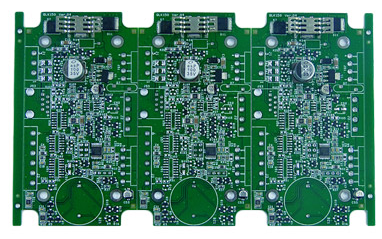Before starting a complete production run, you need to ensure that your PCB is operating normally. After all, when a PCB fails after full production, it cannot afford costly errors, or worse, the failure will still be detected after the product is put on the market.
Creating a prototype ensures that any issues that may threaten the functionality of the final product are eliminated as early as possible. In fact, multiple PCB prototypes can be run to test a single function.
There are many types of PCB prototypes to test all aspects. Some of these include:
Visual models: These models are made to illustrate the physical aspects of the design.
Proof-of-concept prototypes: they are used to test the minimum viability of the product without showing all its capabilities
Working prototypes have all the functions of the final product and can be used to test their functions.
Functional prototypes: They are very similar to the final product.
In terms of PCB processing, there are two ways to produce prototypes. These include:
Hand-made through-hole assembly technology
Surface mount technology
smt processing

Although SMT processing (surface mount) manufacturing has many advantages, including accommodating smaller components, components placed on both sides of the circuit board, and less affected by vibration, in the prototype stage, because you are looking for small production runs. This technique is also suitable for situations where time is limited and resources are limited. However, it is suitable for less complex designs.
Due to the following reasons, the overall PCB prototype design helps to build new products quickly:
1. It allows design changes. If you feel that the design does not seem to be suitable, you can easily change it. Any troubleshooting is easy to do. This means you don't have to deal with costly errors later. With a prototype, robust testing can be performed to ensure that it works as intended.
2. It can ensure quality because it can ensure the use of the most effective technology.
3. It allows testing and revision of new products before the start of production.
4. It allows to shorten the time. This is possible because it eliminates guesswork and minimizes rework.
5. It provides the ability to test components individually. This is especially important for complex projects.
Smt processing assembly line production process
SMT process
Printing is the first step of the SMT process, using an automatic stencil printer to apply solder paste on the exposed PCB pads. The mechanical fixture inside the printer fixes the PCB and the SMT stencil together, and the pads on the PCB and the holes on the template are perfectly aligned using the printer's vision system. The thickness of the template, the size of the hole, the pressure and speed of the squeegee control the amount of solder paste deposited on the SMT pads on the PCB.
smt patch
Mounting is the second step of SMT, using an automatic "pick and place" machine to place SMT components on the PCB. On this machine, the robotic device will automatically place the components on the PCB. Prior to this, the machine needs to be programmed with design files (Gerber files, BOM and CAD files, also called XY data). The CAD file contains the position and rotation information of all components on the BOM list.
Reflow soldering is the third step of the smt placement process, and the PCB is sent to the reflow oven. The solder paste is used as an adhesive to fix the components during heating. Program the oven with a thermal profile corresponding to the solder paste used. Once the solder paste reaches its reflow temperature, it will melt. In the case of double panels, each side must be completed separately. Only in strict accordance with all prescribed procedures can the quality of PCBA processing be guaranteed.